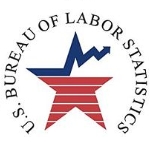The Bureau of Labor Statistics (BLS) is one of eight specialized divisions within the Department of Labor, and a direct descendent of the original Bureau of Labor, Department of the Interior, established in 1884. (Today’s Department of Labor was established as a cabinet-level agency in 1913). It is the research arm of the Department of Labor, and the principal fact-finding organization for the Federal Government in the field of labor economics. The data it collects and disseminates on variables such as employment and unemployment, price and spending trends, compensation, productivity and health, have a great influence on economic and social policymaking, labor market and politics, and important decisions within business and financial communities.
(Harvard University)
- Compensation
- Consumer expenditures
- Consumer price index
- Contingent workers
- Displaced workers
- Employee benefits
- Employer provided training
- Employment
- Employment cost trends
- Employment projections
- Foreign labor
- Import-export prices
- Industry employment
- Job injuries
- Labor force
- Locality pay
- Longitudinal surveys
- Occupational projections
- Producer price index
- Productivity
- Real earnings
- State and area employment
- Unemployment
- Union members
- Wages
- Weekly earnings
There are 5 Bureau of Labor Statistics federal grants, government grants and loans. Popular BLS grant areas include:
Employment Projections Data, Labor Force Statistics, Prices and Cost of Living Data, Compensation and Working Conditions, and Productivity and Technology Data.
- Table of Contents
- Overview
- History
- What it Does
- Where Does the Money Go
- Controversies
- Suggested Reforms
- Comments
- Leave a comment
The Bureau of Labor Statistics, which is the research arm of the Department of Labor and the principal fact-finding organization for the Federal Government in the field of labor economics, has a new leader in the pipeline, an experienced labor economist who has spent most of her career working for the Federal Reserve. Dr. Erica L. Groshen, who was nominated for a four-year term by President Obama on February 16, is herself a former union member and official who describes herself as “nonpartisan.” She has not yet been scheduled for a Senate confirmation hearing.

Dr. Keith Hall earned a bachelor’s Degree from the University of Virginia and M.S and PhD degrees in economics from Purdue University. He taught on the faculties of the University of Arkansas and the University of Missouri. Hall spent ten years at the U.S. International Trade Commission, including in the position of senior international economist in the Research Division, in the Office of Economics. He worked as chief economist in the U.S. Department of Commerce before joining the White House Council of Economic Advisors for two years as chief economist. He was nominated by President Bush for the post of BLS Commissioner in September of 2007.
- Latest News
- D.C. Public Schools will Teach all Second-Graders to Ride a Bike
- New Rule in Germany Limits Sales of Sex-Themed E-Books to 10pm to 6am
- What Happened to the 6-Year-Old Tibetan Boy the Chinese Government Kidnapped 20 Years Ago?
- U.S. Ambassador to Turkey Photoshops his Hair Color to Mock Turkish Mayor
- Mystery Artist Calls Attention to Unfixed Potholes by Drawing Penises around Them
The Bureau of Labor Statistics (BLS) is one of eight specialized divisions within the Department of Labor, and a direct descendent of the original Bureau of Labor, Department of the Interior, established in 1884. (Today’s Department of Labor was established as a cabinet-level agency in 1913). It is the research arm of the Department of Labor, and the principal fact-finding organization for the Federal Government in the field of labor economics. The data it collects and disseminates on variables such as employment and unemployment, price and spending trends, compensation, productivity and health, have a great influence on economic and social policymaking, labor market and politics, and important decisions within business and financial communities.
(Harvard University)
- Compensation
- Consumer expenditures
- Consumer price index
- Contingent workers
- Displaced workers
- Employee benefits
- Employer provided training
- Employment
- Employment cost trends
- Employment projections
- Foreign labor
- Import-export prices
- Industry employment
- Job injuries
- Labor force
- Locality pay
- Longitudinal surveys
- Occupational projections
- Producer price index
- Productivity
- Real earnings
- State and area employment
- Unemployment
- Union members
- Wages
- Weekly earnings
There are 5 Bureau of Labor Statistics federal grants, government grants and loans. Popular BLS grant areas include:
Employment Projections Data, Labor Force Statistics, Prices and Cost of Living Data, Compensation and Working Conditions, and Productivity and Technology Data.
Comments
The Bureau of Labor Statistics, which is the research arm of the Department of Labor and the principal fact-finding organization for the Federal Government in the field of labor economics, has a new leader in the pipeline, an experienced labor economist who has spent most of her career working for the Federal Reserve. Dr. Erica L. Groshen, who was nominated for a four-year term by President Obama on February 16, is herself a former union member and official who describes herself as “nonpartisan.” She has not yet been scheduled for a Senate confirmation hearing.

Dr. Keith Hall earned a bachelor’s Degree from the University of Virginia and M.S and PhD degrees in economics from Purdue University. He taught on the faculties of the University of Arkansas and the University of Missouri. Hall spent ten years at the U.S. International Trade Commission, including in the position of senior international economist in the Research Division, in the Office of Economics. He worked as chief economist in the U.S. Department of Commerce before joining the White House Council of Economic Advisors for two years as chief economist. He was nominated by President Bush for the post of BLS Commissioner in September of 2007.
- Latest News
- D.C. Public Schools will Teach all Second-Graders to Ride a Bike
- New Rule in Germany Limits Sales of Sex-Themed E-Books to 10pm to 6am
- What Happened to the 6-Year-Old Tibetan Boy the Chinese Government Kidnapped 20 Years Ago?
- U.S. Ambassador to Turkey Photoshops his Hair Color to Mock Turkish Mayor
- Mystery Artist Calls Attention to Unfixed Potholes by Drawing Penises around Them






Comments